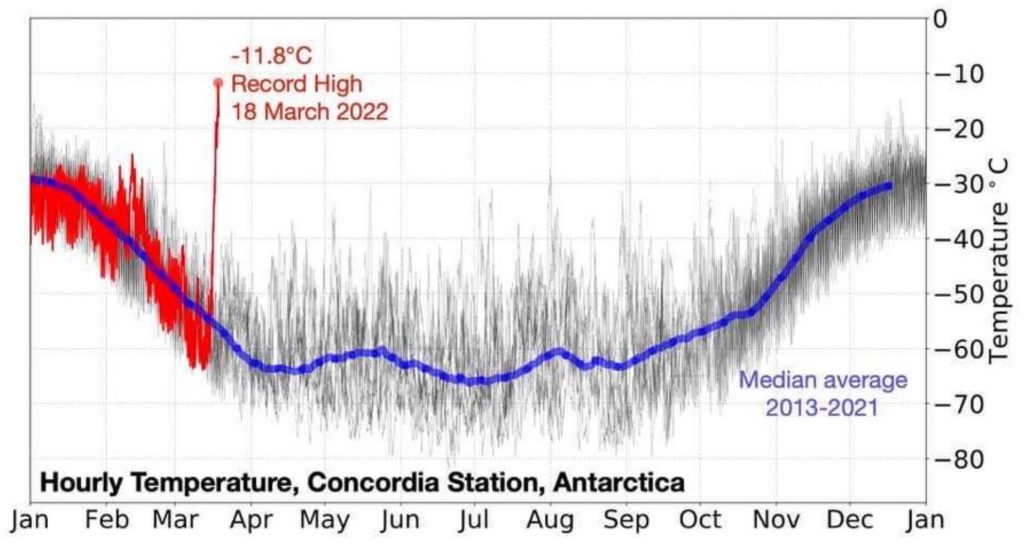Expert explains NB4 polar temperature extremes
Yale Climate Connections‘ Bob Hensen discusses and explains the unimaginable heat episodes observed at in north and south polar regions

by Bob Hensen, 23/03/2022 in Yale Climate Connections
How this month produced a mind-boggling warm-up in eastern Antarctica (and the Arctic): Two atmospheric rivers surge toward opposite poles:
The bloodless term “anomaly” doesn’t do justice to the stupendous temperature departures seen across parts of both the Antarctic and Arctic in mid-March 2022. With the initial shock now behind them, scientists are taking stock of exactly what happened and what it might portend.
Read the complete article….
Featured image: The high temperature at Concordia Station, Antarctica, on March 18, 2022, soared above any temperature on record, even from midsummer, in data going back to 2013. (Image credit: Eric Lagadec, via ASTEP from the Article).
